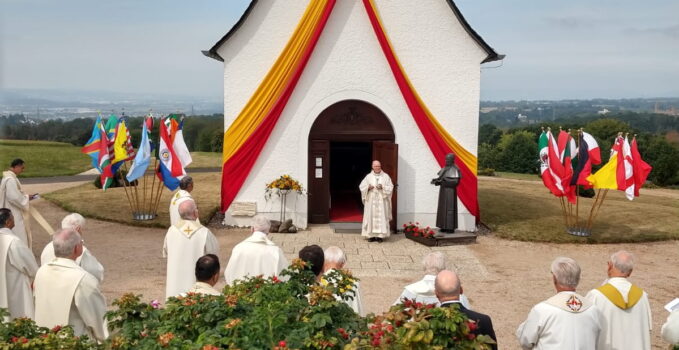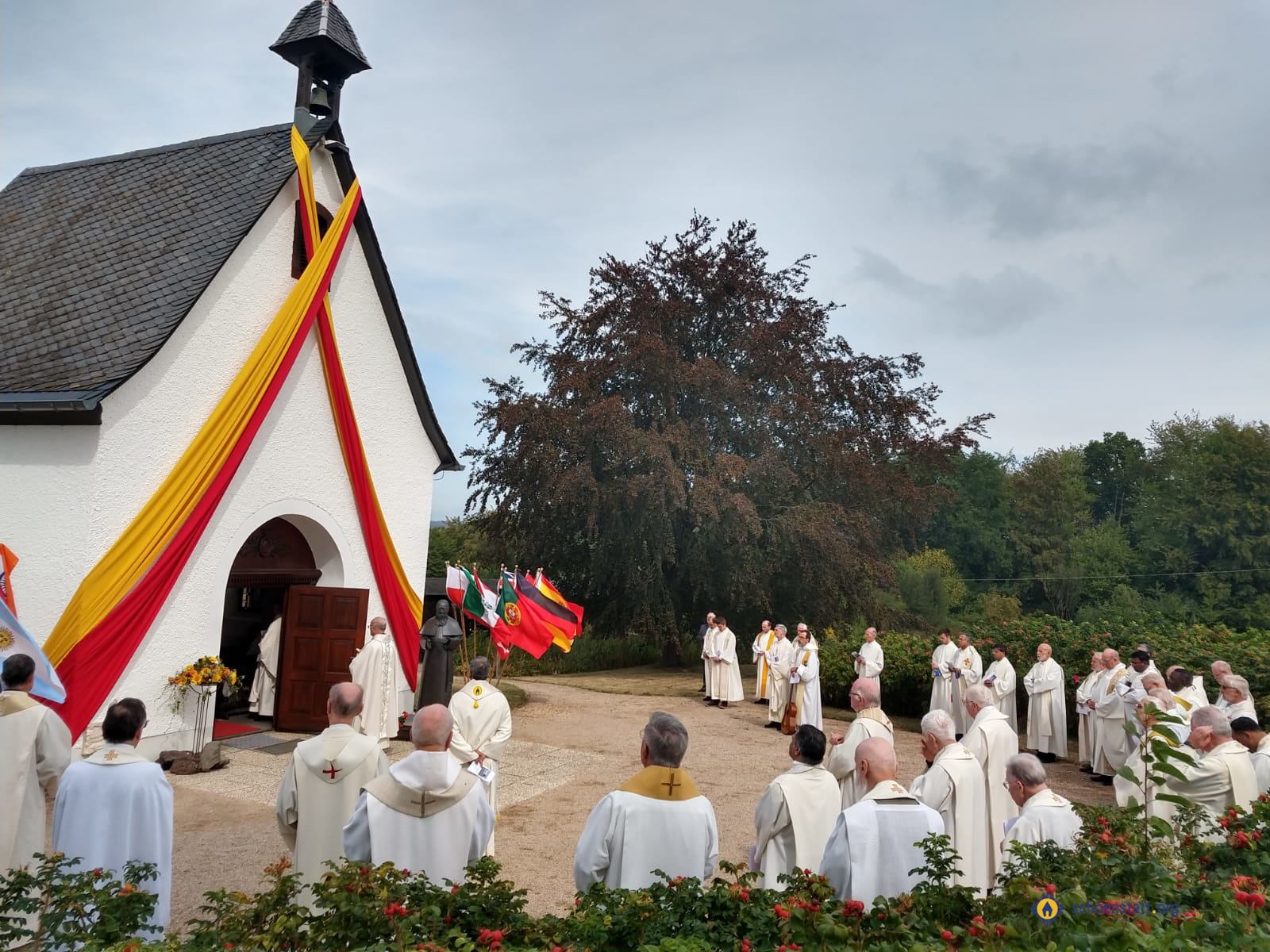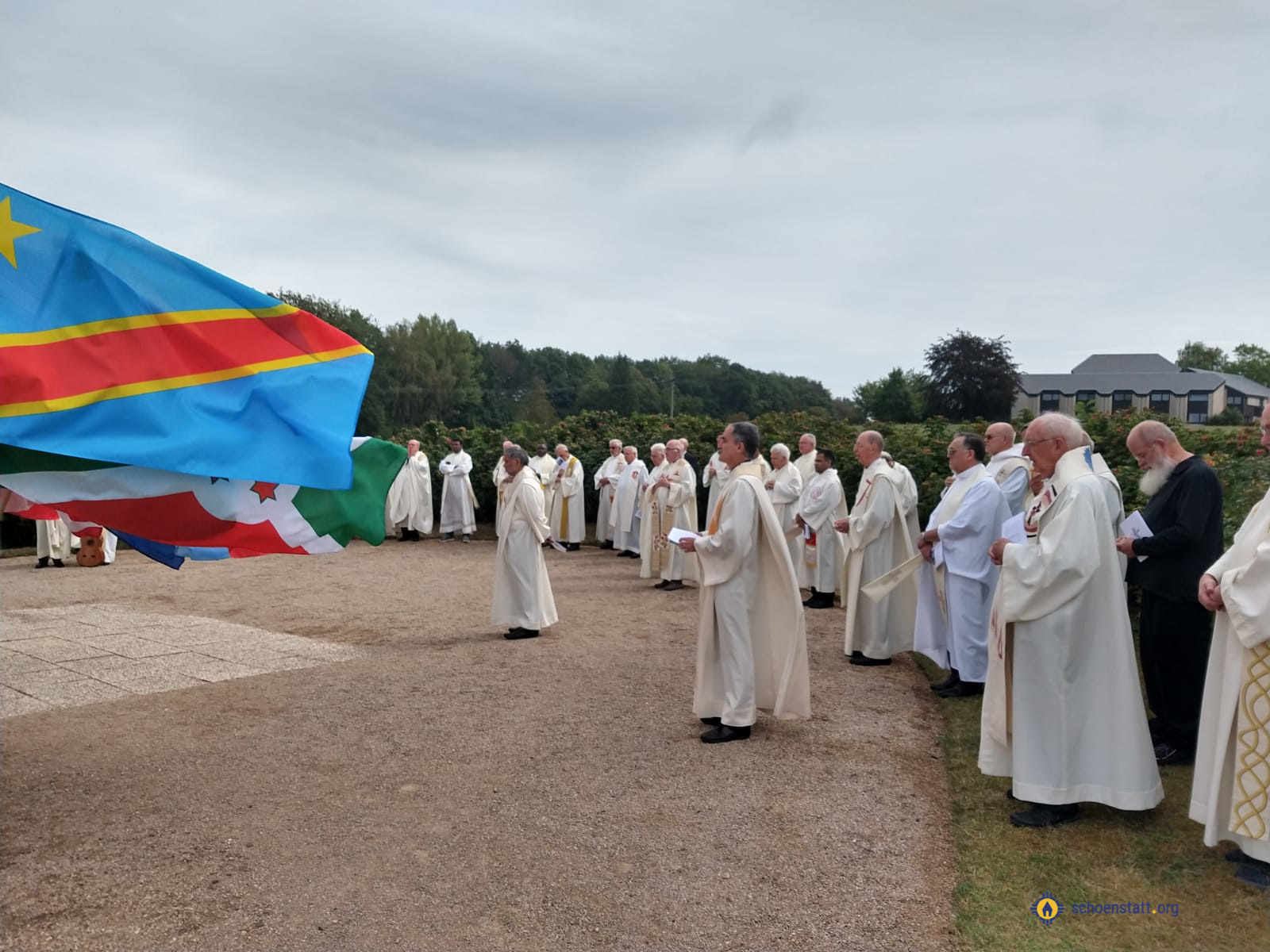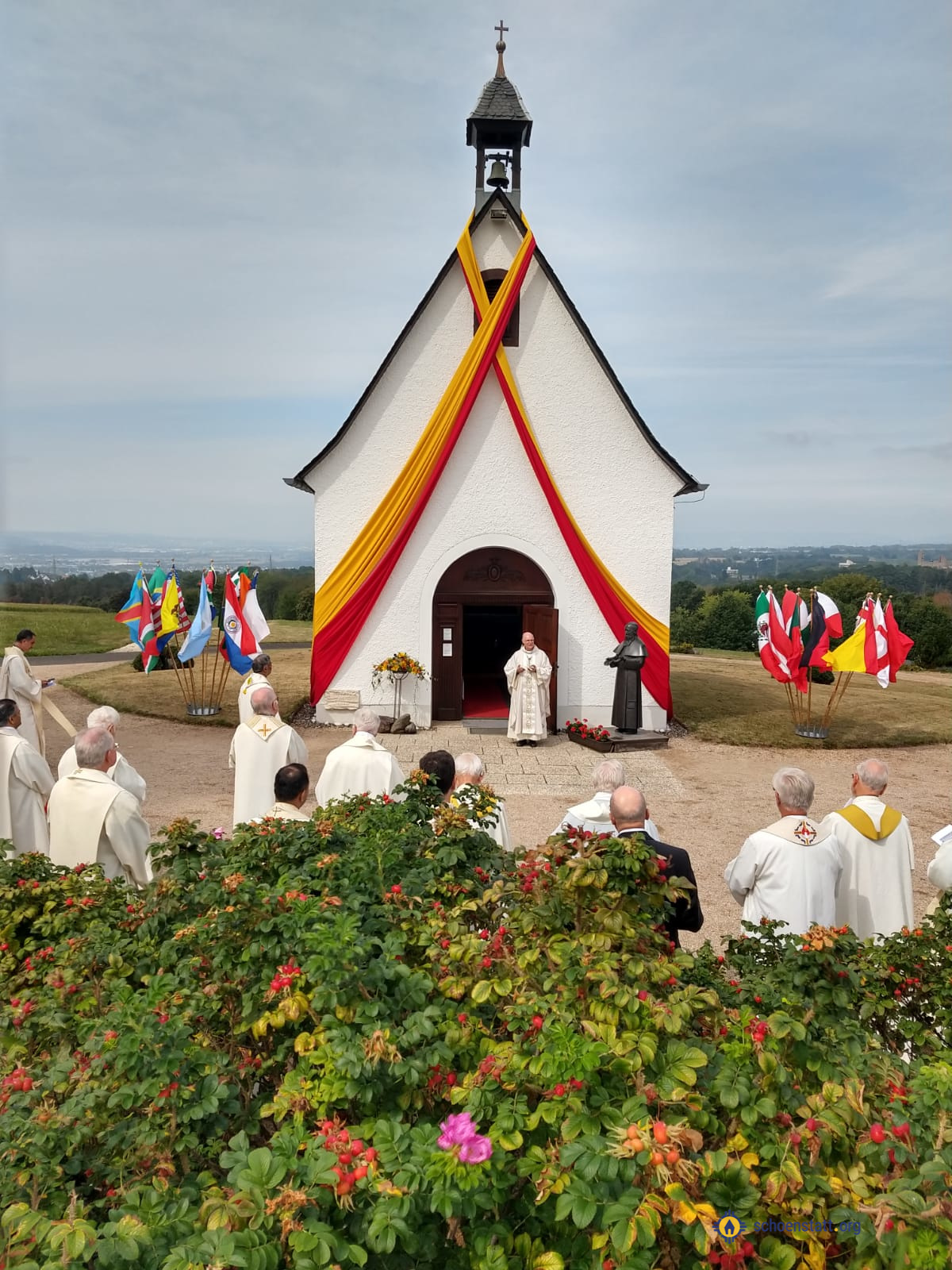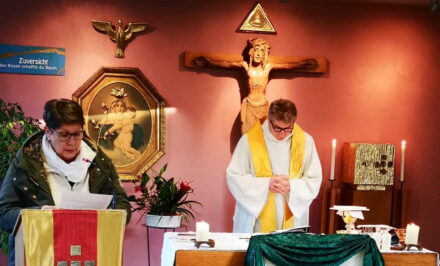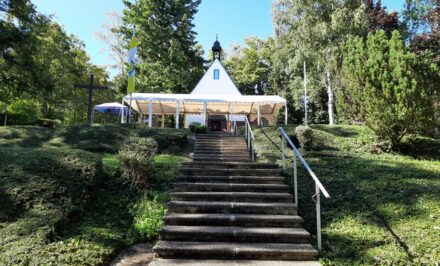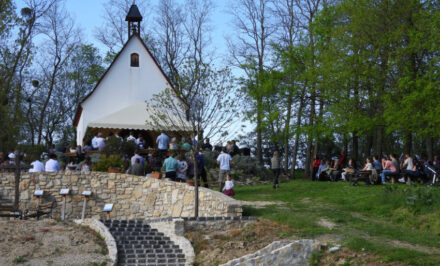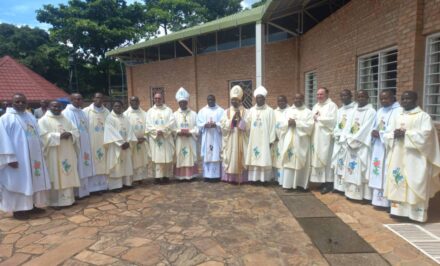Interview of Father Juan Pablo Catoggio, General Superior of the Secular Institute of Schoenstatt Fathers (part 1/3) •
For the 50-year jubilee of the Sion Shrine in Schoenstatt and as tribute to our Schoenstatt Fathers, editors and columnists of Schoenstatt.org (Eduardo Shelley, Monina Crivelli, Paz Leiva, Ignacio Serrano, and Juan Zaforas) wrote the following questions for Father Juan Pablo Catoggio, who is the Argentine Superior General of the Schoenstatt Fathers since 2015. Today we publish the first of three parts of this long interview. —
» I thank you all for this invitation, and I am pleased by this inititave of Schoenstatt.org, as an instrument of independent information to get to know and share all the life that arises in Schoenstatt.
Once, a bishop visited us while I was a novice. At the end of our lunch he said, “before my talk, I would like to say a few words.” Allow me, too, to say some words before responding to your questions. When I read the four pages of questions, I said to myself, “the questions will be longer than the interview!” I recalled a very nice remark from Ortega and Gasset: “The great philosophers of history are those who have posed the fundamental questions, far more than the brilliant responses.” So, I wish for the readers to enjoy the questions and hope they can enjoy some of the answers.
Q: Father Juan Pablo: when the Schoenstatt Fathers say of themselves, “in the horizon, Sion smiles on us,” immediately the word “Sion” stands out. It’s a biblical expression, used by Father Kentenich in his prayers from Heavenwards, it is the name of mountains, shrines, communities, albs… and in Germany there’s even a Sion beer, but presumably that’s not a secret brand of the (Schoenstatt) Fathers.
What does Sion mean? What does it mean as the name of your Shrines and the ideal of your community? Who, or what, does it come from? What’s the story behind Sion? What did Father Kentenich grasp or understand through the word Sion?
Why was the Sion Shrine built, and what did it mean and does it mean for Schoenstatt around the world?
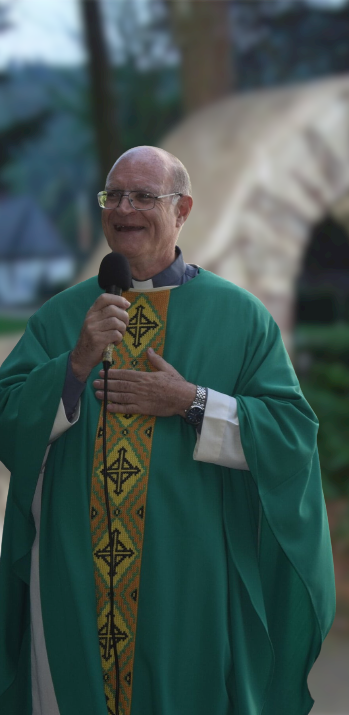 » Our community was founded in 1965, at the end of the Council and a little before the end of Father Kentenich’s exile. In that foundational moment, it was very important to have a clear identity and a center around a Shrine in Schoenstatt. Our Superior then, Father Bodo Maria Erhard, told Father Kentenich that the Fathers were searching for a name, prefereably biblical, for our center. Between others, one possibility was “Sion.” At that, Father Kentenich’s eyes lit up, and with the authority only a founder possesses, he said immediately,
» Our community was founded in 1965, at the end of the Council and a little before the end of Father Kentenich’s exile. In that foundational moment, it was very important to have a clear identity and a center around a Shrine in Schoenstatt. Our Superior then, Father Bodo Maria Erhard, told Father Kentenich that the Fathers were searching for a name, prefereably biblical, for our center. Between others, one possibility was “Sion.” At that, Father Kentenich’s eyes lit up, and with the authority only a founder possesses, he said immediately,
“Well then, call it Sion!”
Este nombre era muy querido para el P. Kentenich y lo utilizó varias veces en el libro de oraciones “Hacia el Padre”, para referirse a todo Schoenstatt, como lugar y como familia. Cuando visitó el terreno de Belmonte, en Roma, el día que cumplió 80 años dijo: “¿qué debe ser la Iglesia? ¡La ciudad santa de Sion!”
This name was very dear to Father Kentenich and he used it many times in the prayer book Heavenwards, to refer to all of Schoenstatt, as both a place and a family. When he visited the grounds of Belmont, in Rome, the day he turned 80, he said, “What should the Church be? The Holy City of Sion!”
Sion is a biblical name. In the Old Testament is Mount Sion, in Jerusalem, where the temple of Solomon and the palace of David were built. Later, in the New Testament, Sion signified another hill in Jerusalem, where the cenacle lay, and where, according to tradition, the Assumption of Mary would have been. There today is the Benedictine Abbey of the “Dormition of Mary.”
Sion symbolizes the place, the dwelling, of God among men, the mountain, the Holy City where God lives, that in which all people meet, from where God gives his law and guidance to all peoples. It is a holy place of prayer and graces and of “immanent encounter with God,” of blessing.
Because of this, it is a symbol of Schoenstatt for Father Kentenich, called to be a place and a family, an illustrious example, a role model, of a new community, of the “city or nation of God,” of the renewed Church. Undoubtedly, as we are accustomed to in Schoenstatt, this revolves around ideals that to us are great, but for that reason, they give meaning to our lives.
For the community of Schoenstatt Fathers, Sion is a spiritual center, where Mary gives us a home, where we form our priestly heart like that of Jesus, where we unite as a family, where we receive grace and our “sending out”. Because of this, we repeat with the words of Psalm 87 every day: “Sion, all of my fountains are in you.”
What does Sion need for the coming years? More mission, more prayer, more adoration, more drive?
»In these 50 years we prayed to God to become (as a community) “more Sion.” In everything. More in sanctity, which is always a work of grace and mercy in our fragility and misery. To this effect we should become better men of God, of prayer, contemplatives, men of the Holy Spirit. I ensure that the Fathers are, in general, natural and profoundly religious, but we should also be more “pious,” and more prayerful.
This is the condition upon which all else rests: to be “more Sion” in brotherhood, “more Sion” in sacrificial, disinterested, generous, respectful, and faithful fatherhood. “Whoever should lead others should fold his hands in prayer,” says Father Kentenich. Only if we vividly experience that God leads us, can we lead others. From the altar to the arena—from adoration to the mission.
When Father Juan Pablo prays: who are in the center of your concerns as an at-risk-population? The oldest fathers? The youngest? The old world? The new? Africa? India?
» I don’t know if I pray enough, but in my prayers, I turn to the world every day. I think about specific people. Many of them. Many Fathers, naturally, but also about many people whom I feel God has entrusted to me and for whom I feel responsible. I pray, always, for the old fathers and the sick: it is the first obligation of any family. I pray for the Fathers that face crisis or difficult moments in their ministry or in their life. I always pray for vocations—for new vocations and for the vocation of every brother priest and his fidelity. As always, but now more than ever, fidelity is a free gift of God and not of our own merit, nor fruit of our will. And I give thanks, many times, for the gift of every single one, for the self-gift and the generosity of each one. I admire many Fathers and it makes me feel proud of Sion, more than all of our limitations and shortcomings, of which I am of course very conscious.
To celebrate 50 years is to look back. While the majority of the Schoenstatt communities already celebrated 100 years since their founding or other centennials, or they prepare to do so, the Fathers’ shrine is 50 years old and the community is only a few years older.
Why did Father Kentenich found this final community, the community of the Schoenstatt Fathers, when everything else had already been founded? How did the other siblings receive this “Benjamin,” this youngest brother? What role and mission did Father give to this new community, as it was called?
What are the milestones of this community’s history, with its obstacles and triumphs? And what role does your hometown, La Plata, have in this affair?
» Effectively, our community is Father Kentenich’s last establishment, strictly speaking. Until 1956 or ’57, he believed that the community of Pallottines—the Society of the Catholic Apostolate—should be the inspiring and animating body of the Apostolic Movement of Schoenstatt–its “pars motrix et centralis” (its motor and central part) in the words of St. Vincent Pallotti. Not exclusively so, but preeminently. God had other plans, as history showed.
In the time of exile, one of the central themes was precisely the relationship between Schoenstatt and Pallotti. Many maintained that Schoenstatt was nothing more than an apostolic work of the Pallottines, and not an original founding of Father Kentenich. This was the official stance of the General Superior of the Pallottines. Starting in 1957 it was increasingly clear for many—and for Father Kentenich—that Schoenstatt needed a “new community,” a new “pars motrix et centralis.” This conviction was growing among many fathers and Pallottine Schoenstatt students, and among other young people who felt called to this new community from the Schoenstatt Youth. From these groups, diverse in origin, of many countries and generations, our community was born.
From 1963 to 1964 the third visitation took place—very little known but very important in the history of Schoenstatt. This was a visitation to all of the Movement ordered by the Congregation of Religioius (not by the Holy Office) through the insistence of many German bishops, led by the Dominican priest Hilarius Albers. His conclusions were essential: Schoenstatt is a proper and original thing, founded by Father Kentenich, and it needed a new concurrent community at the service of its life and inspiration. The autonomy of Schoenstatt was defined with these conclusions, promulgated on October 18th, 1964, and the base for the foundation of a new institute was laid on July 18, 1965. At the same time, this foreshadowed a very great change in the stance of the Holy Office and the return of Father Kentenich from exile in the final months of 1965.
Mother Teresa of Calcutta, who after long discernment left a religious community to found the Missionaries of Charity, spoke autobiographically of a vocation-within-a-vocation. The Superior General of the Schoenstatt Fathers at the time put forth this expression to explain the founder vocation of Father Kentenich.
As I have said, the community was born in an ecclesial context (at the final stage of the Council) and a Schoenstatt context (only a little while after the family became autonomous), with priests and seminarians that came from the Pallottines—in Chile, Germany, Brazil, Switzerland, a few from the U.S., Argentina, and other places—and with young men from many countries who came from the Male Youth. It was a very heterogenous group that had to come together. In this, it was very important to centralize the formation for a good while in Germany, with practically only one novitiate from 1966 to 1988, and until 1995 only one international seminary. Later, the houses of formation of the distinct continents de-centralized. But the interior and spiritual unification of the community was given with Sion. Because of this we speak of a foundational process of “Sionization,” that culminated with the benediction of the Shrine on top of the mountain in 1970, and with the first general chapter in 1974.
But in the origins—1965 and before—we didn’t have anything: not houses, nor resources, we were very dispersed in different countries, from distinct generations and cultures, with our founder still in exile… Father Kentenich was not permitted to join our community, altough he wrote asking permission from the Congregation of Religious, nor could an ex member of the Pallottines be the General Superior. Due to this, the first official Superior General was Monsignor W. Wissing, although technically he wasn’t a member of our community.
In those moments, the support of the German bishops and those of other places was decisive. Bishop A. Bolte from Fulda, Germany, and a diocesan Schoenstatt Father, and Bishop Antonio Plaza from La Plata, Argentina, who had a special sympathy for the exiled founder, formally accepted the new community. He had already helped greatly to ordain Father G. Boll, Father Erhard, and others as priests before our founding.
To be continued with more exciting questions and answers – promise!
Official website: www.schoenstatt-fathers.org
Original: Spanish, September 21, 2020. Translation: Zachary Larson, Austin, TX, USA


